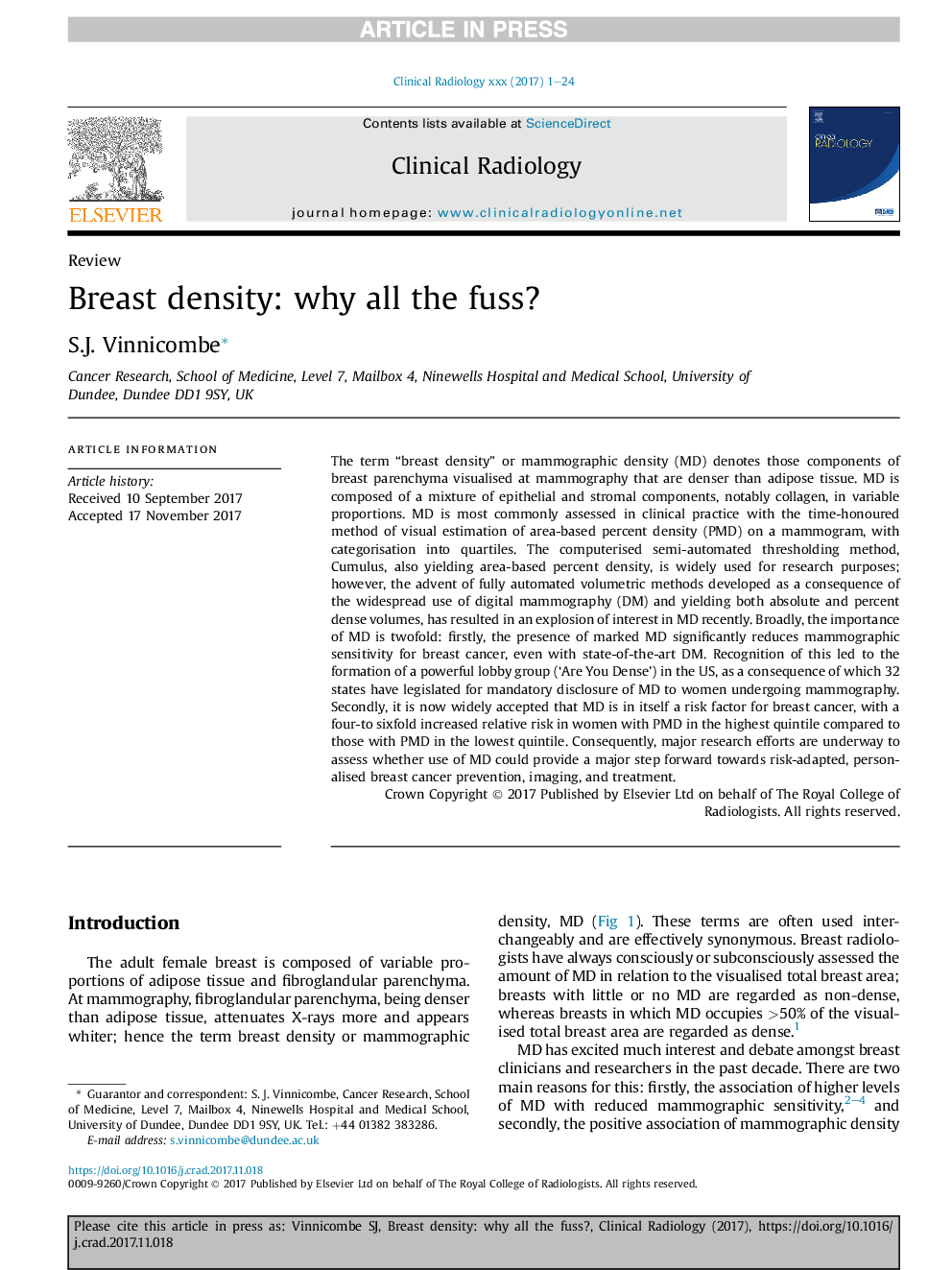| Article ID | Journal | Published Year | Pages | File Type |
|---|---|---|---|---|
| 8786499 | Clinical Radiology | 2018 | 24 Pages |
Abstract
The term “breast density” or mammographic density (MD) denotes those components of breast parenchyma visualised at mammography that are denser than adipose tissue. MD is composed of a mixture of epithelial and stromal components, notably collagen, in variable proportions. MD is most commonly assessed in clinical practice with the time-honoured method of visual estimation of area-based percent density (PMD) on a mammogram, with categorisation into quartiles. The computerised semi-automated thresholding method, Cumulus, also yielding area-based percent density, is widely used for research purposes; however, the advent of fully automated volumetric methods developed as a consequence of the widespread use of digital mammography (DM) and yielding both absolute and percent dense volumes, has resulted in an explosion of interest in MD recently. Broadly, the importance of MD is twofold: firstly, the presence of marked MD significantly reduces mammographic sensitivity for breast cancer, even with state-of-the-art DM. Recognition of this led to the formation of a powerful lobby group ('Are You Dense') in the US, as a consequence of which 32 states have legislated for mandatory disclosure of MD to women undergoing mammography. Secondly, it is now widely accepted that MD is in itself a risk factor for breast cancer, with a four-to sixfold increased relative risk in women with PMD in the highest quintile compared to those with PMD in the lowest quintile. Consequently, major research efforts are underway to assess whether use of MD could provide a major step forward towards risk-adapted, personalised breast cancer prevention, imaging, and treatment.
Related Topics
Health Sciences
Medicine and Dentistry
Oncology
Authors
S.J. Vinnicombe,
